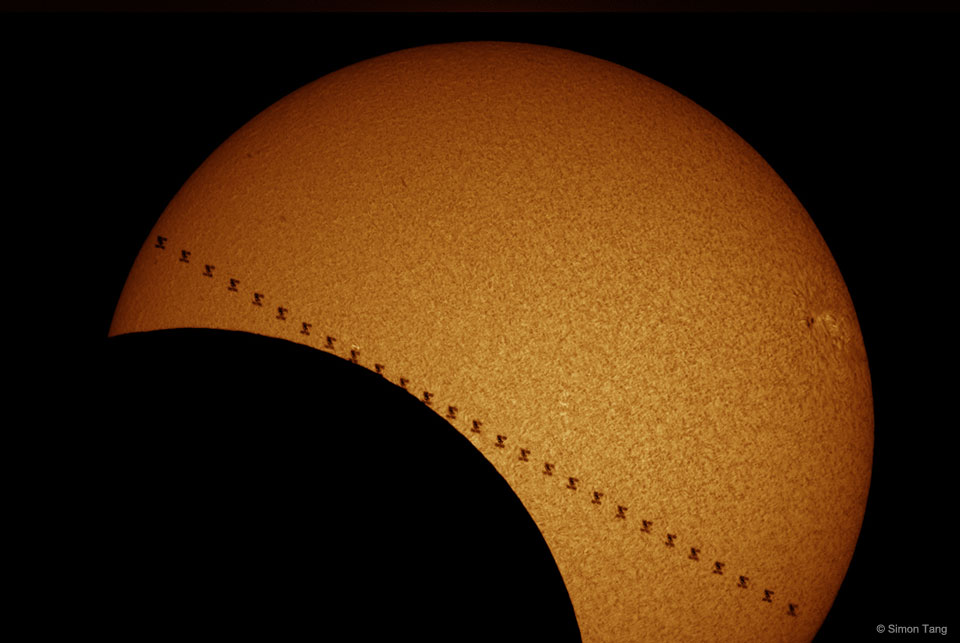more »
Last week, for a fraction of a second, the Sun was eclipsed twice. One week ago today, many people in
North America were treated to a standard, single,
partial solar eclipse. Fewer people, all congregated along a narrow path, experienced the
eerie daytime darkness of a total solar eclipse. A dedicated few with fast enough camera equipment, however, were able to capture a
double eclipse -- a simultaneous partial eclipse of the
Sun by both the
Moon and the
International Space Station (ISS). The Earth-orbiting
ISS crossed the Sun in less than a second, but to keep the
ISS from appearing
blurry, exposure times must be less than 1/1000th of a second. The featured image composite captured the
ISS multiple times in succession as it zipped across the
face of the Sun. The picture was taken in a
specific color emitted by
hydrogen which highlights the
Sun's chromosphere, a layer hotter and higher up than the usually photographed
photosphere.
Zazzle Space Gifts for young and old
